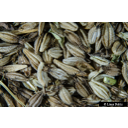Wissenswertes zum Taxon (Art, Unterart, Varietät...)
Astrantia major L. 1753
Apiaceae (Umbelliferae) - Doldengewächse (APG IV)
Große Sterndolde
Taxonkonzept: The Plant List (2014), version 1.1
Verbreitung: Europa ohne Britische Inseln, Skandinavien, eingebürgert in Britische Inseln, Skandinavien
Größe: 0 (m)
Blütezeit: IV - VII
Astrantia major L. subsp. major - Accepted: Astrantia major L. subsp. major bei Zander 2008; Familie: Apiaceae (Umbelliferae) (Zander 2008)
Astrantia major L. subsp. major - no status: Astrantia major L. bei The Plant List (2010); Familie: Apiaceae (Umbelliferae) (APG III)
Astrantia major L. - Accepted: Astrantia major L. bei The Plant List (2010); Familie: Apiaceae (Umbelliferae) (APG III)
Astrantia major L. subsp. major - no status: Astrantia major L. bei The Plant List (2014), version 1.1; Familie: Apiaceae (Umbelliferae) (APG III)
Astrantia major L. - Accepted: Astrantia major L. bei Zander 2008; Familie: Apiaceae (Umbelliferae) (Zander 2008)
Astrantia major L. - Accepted: Astrantia major L. bei The Plant List (2014), version 1.1; Familie: Apiaceae (Umbelliferae) (APG III)
Astrantia major L. - Accepted: Astrantia major L. bei The Plant List (2010); Familie: Apiaceae (Umbelliferae) (APG IV)
Astrantia major L. - Accepted: Astrantia major L. bei Schmeil-Fitschen 2019; Familie: Apiaceae (Umbelliferae) (APG IV)
Astrantia major L. - Accepted: Astrantia major L. bei BfN Checklist Flora DE; Familie: Apiaceae (Umbelliferae) (APG IV)
Astrantia major L. - Accepted: Astrantia major L. bei World Flora Online - APG IV (Angiosperms); Familie: Apiaceae (Umbelliferae) (World Flora Online - APG IV (Angiosperms))
Astrantia major L. subsp. major - no status: Astrantia major L. bei The Plant List (2010); Familie: Apiaceae (Umbelliferae) (APG III)
Astrantia major L. - Accepted: Astrantia major L. bei The Plant List (2010); Familie: Apiaceae (Umbelliferae) (APG III)
Astrantia major L. subsp. major - no status: Astrantia major L. bei The Plant List (2014), version 1.1; Familie: Apiaceae (Umbelliferae) (APG III)
Astrantia major L. - Accepted: Astrantia major L. bei Zander 2008; Familie: Apiaceae (Umbelliferae) (Zander 2008)
Astrantia major L. - Accepted: Astrantia major L. bei The Plant List (2014), version 1.1; Familie: Apiaceae (Umbelliferae) (APG III)
Astrantia major L. - Accepted: Astrantia major L. bei The Plant List (2010); Familie: Apiaceae (Umbelliferae) (APG IV)
Astrantia major L. - Accepted: Astrantia major L. bei Schmeil-Fitschen 2019; Familie: Apiaceae (Umbelliferae) (APG IV)
Astrantia major L. - Accepted: Astrantia major L. bei BfN Checklist Flora DE; Familie: Apiaceae (Umbelliferae) (APG IV)
Astrantia major L. - Accepted: Astrantia major L. bei World Flora Online - APG IV (Angiosperms); Familie: Apiaceae (Umbelliferae) (World Flora Online - APG IV (Angiosperms))
- Schutzstatus, Rote Liste
- Ungefährdet in DE (*)
- Lebensform
- krautig, terrestrisch, ausdauernd (Staude)
- Vegetationstypus und Synökologie (Pflanzengesellschaft)
- Ver. Polygono-Trisetion (D)
- Status der Einbürgerung
- I
- Nektar
- wenig bis mittel
- Pollen
- wenig
Erhardt, W., Götz, E., Bödeker, N. & Seybold, S. (2008): Der große Zander. Enzyklopädie der Pflanzennamen. Band 2. Arten und Sorten. Eugen Ulmer KG, Stuttgart (Hohenheim), 18. Aufl., 2103 S.;
Maurizio, Anna et al. (1982): Nektar und Pollen - die wichtigsten Nahrungsquellen der Honigbiene. 4. Ehrenwirth, München, 3, überabeitete Auflage;
Schick, B. & Spürgin, A. (1997): Die Bienenweide. Eugen Ulmer Verlag, Stuttgart, Auflage: 4., völlig neubearb. u. erw. A., 216 S. 978-3800174188.;
The International Plant Names Index (2009). Published on the Internet http://www.ipni.org; Courtesy to IPNI, 2009. Exported from IPNI at date: 2009-09-22 20:17:51;
Maurizio, Anna et al. (1982): Nektar und Pollen - die wichtigsten Nahrungsquellen der Honigbiene. 4. Ehrenwirth, München, 3, überabeitete Auflage;
Schick, B. & Spürgin, A. (1997): Die Bienenweide. Eugen Ulmer Verlag, Stuttgart, Auflage: 4., völlig neubearb. u. erw. A., 216 S. 978-3800174188.;
The International Plant Names Index (2009). Published on the Internet http://www.ipni.org; Courtesy to IPNI, 2009. Exported from IPNI at date: 2009-09-22 20:17:51;
Diese Webseite verwendet Google Maps, um Karten und Standorte von Pflanzen in den Hohenheimer Gärten anzuzeigen. Dadurch werden unter Umständen Daten an Google weitergeleitet, was mit einer Verarbeitung Ihrer personenbezogenen Daten verbunden sein kann.
Die Datenschutzerklärung von Google finden Sie hier:
Datenschutzerklärung von Google
| Geschlecht | Standort | Akzessions-Nr. | Pflanzjahr | Spende | IPEN | Lat. | Long. |
|---|
Letzte Aktualisierung:
Taxonomische Aktualisierung: Database method am: 22.2.2020Aktualisierung des Steckbriefs: Aleta Neugebauer; Helmut Dalitz; imported by Helmut Dalitz; zuletzt von: Aleta Neugebauer am: 27.6.2025
In der untenstehenden Liste der Pflanzen in den Gärten sind bei vielen Gehölzen Koordinaten vermerkt. In diesen Fällen zeigen die Punkte in der Karte die Standorte der Pflanzen an.
Sind keine Koordinaten vermerkt, zeigt der jeweilige Punkt die Mittelkoordinaten der Parzelle in den Gärten an.


